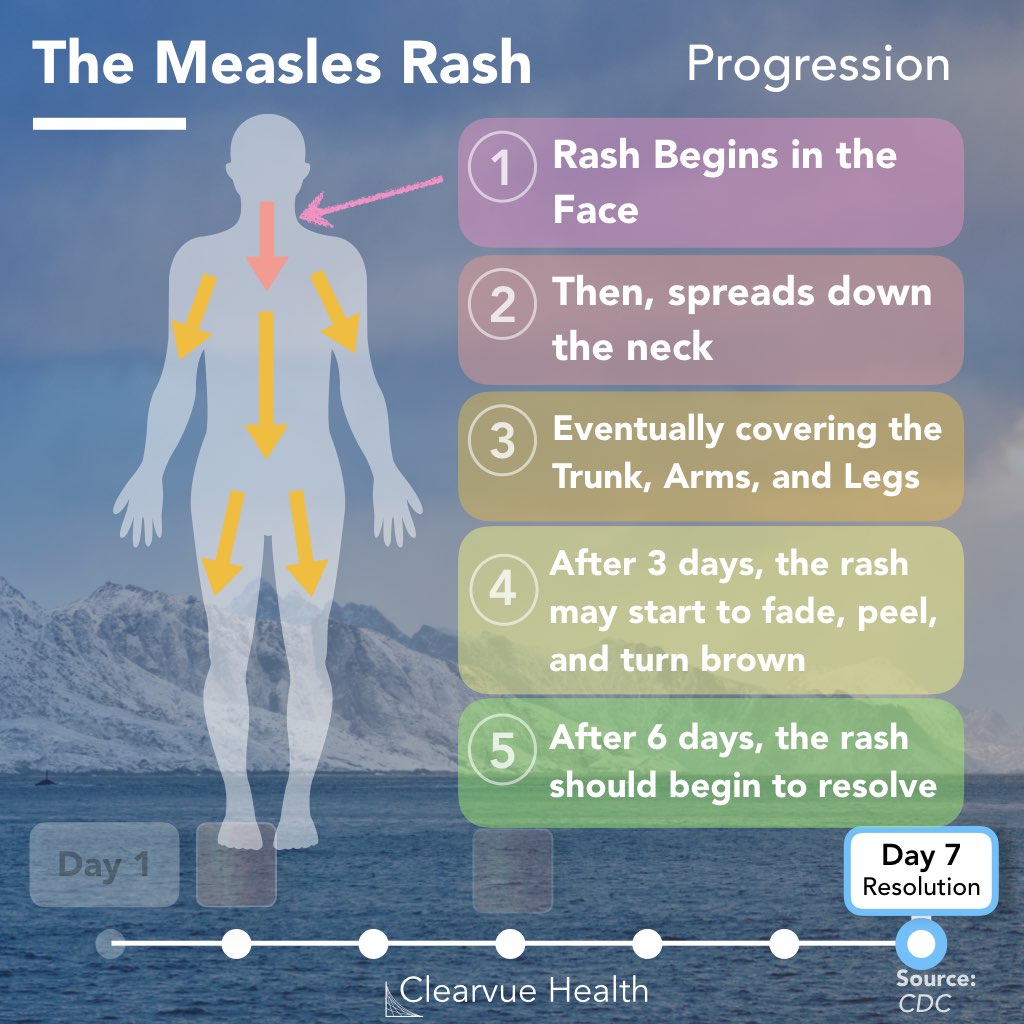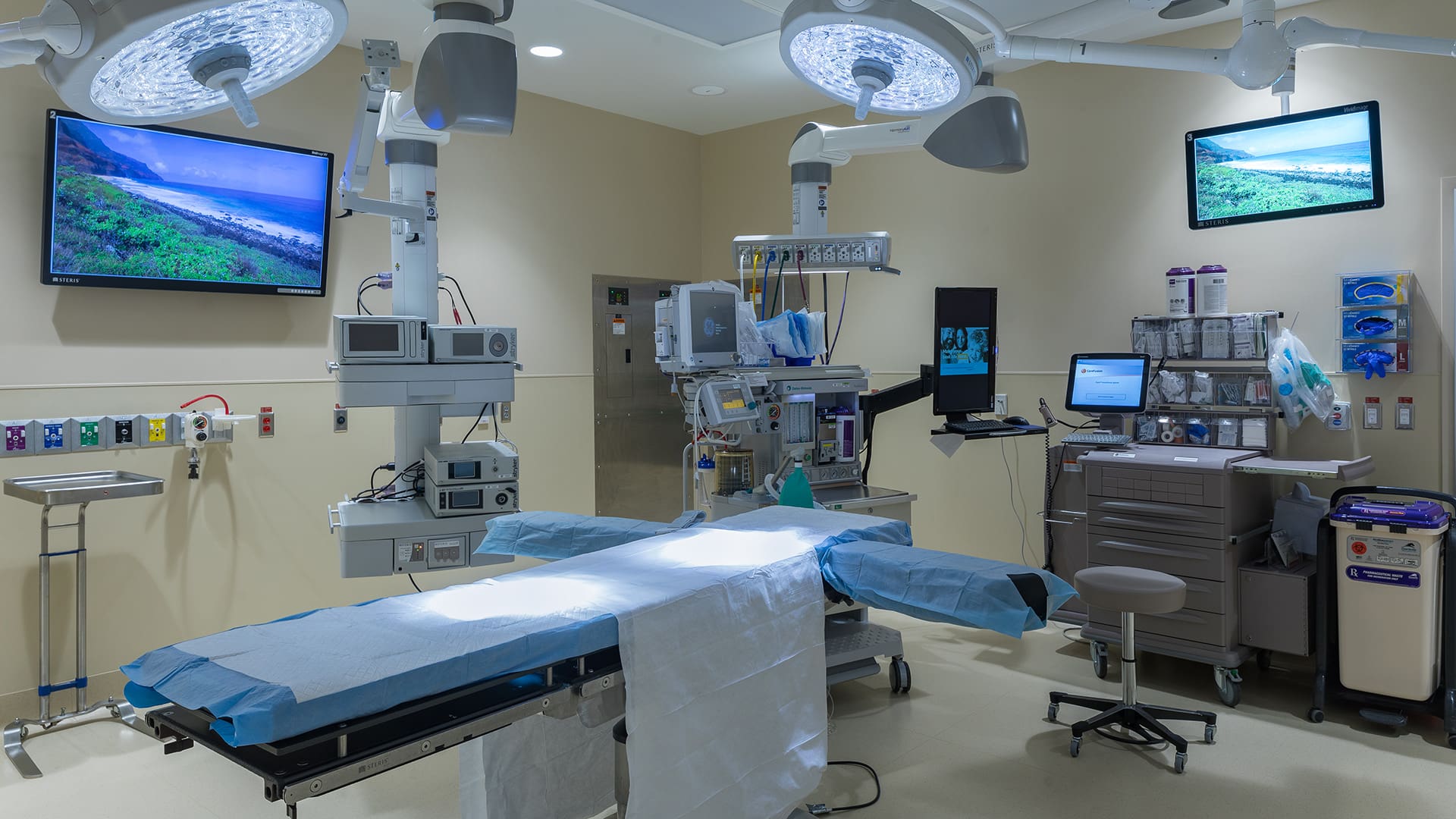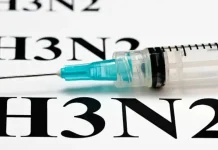The measles progression follows a well-defined and systematic timeline. From the point of initial exposure to complete symptom resolution, the virus advances through identifiable stages. Recognizing these measles stages helps in early detection, effective management, and prevention of complications.
This educational overview provides a detailed breakdown of the measles timeline, highlighting physical changes, viral behavior, and clinical symptoms at every stage.

Overview of the Measles Progression Timeline
Stage 1: Exposure to the Measles Virus
The measles virus (rubeola) is transmitted primarily via airborne droplets when an infected person coughs, sneezes, or talks. The virus remains viable for up to two hours in the air or on surfaces.
-
Transmission Mode: Inhalation or direct contact
-
Contagiousness: Extremely high (90% of susceptible people will get infected upon exposure)
No symptoms are visible at this stage, but the body begins its immunologic response soon after viral entry.
Stage 2: Incubation Period (7 to 10 Days)
During this asymptomatic phase, the virus replicates internally, mainly in the respiratory tract and later in the lymph nodes.
Characteristics of This Stage:
-
No visible symptoms
-
Not yet contagious during the initial days
-
Virus prepares for systemic spread via bloodstream
-
Duration: Typically 7 to 10 days, but can extend slightly in some individuals
This is a silent phase in the measles timeline where the virus multiplies stealthily without triggering the immune system’s full response.
Stage 3: Prodromal Phase (10 to 14 Days Post-Exposure)
The prodrome marks the first onset of recognizable symptoms. The child or patient is now highly contagious, even before the rash appears.
Key Symptoms Include:
-
High-grade fever (often > 101°F or 38.3°C)
-
Cough (dry and persistent)
-
Coryza (runny nose)
-
Conjunctivitis (red, watery eyes)
-
Appearance of Koplik spots:
-
Tiny bluish-white dots inside the cheeks
-
Pathognomonic (unique) sign of measles
-
This stage usually lasts 3–5 days and precedes the hallmark measles rash.
Stage 4: Rash Stage (Typically Days 14 to 18)
The most visible hallmark of measles is the maculopapular rash, which follows a classic pattern of head-to-toe progression.
Rash Characteristics:
-
Initial Site: Behind ears, hairline, and forehead
-
Spreading Pattern: Downward to face, neck, torso, arms, and then legs
-
Color and Texture: Bright red flat spots (macules) with raised bumps (papules)
-
Fusion: Spots may merge into large blotches
-
Fever Peaks: Rash often coincides with maximum fever
The rash is not itchy in all cases but may cause discomfort in younger children. This stage signifies the peak of immune activation, as the body fights the infection aggressively.
Stage 5: Recovery and Rash Fading (Days 18 to 21 and Beyond)
During this stage of the measles progression, symptoms begin to resolve, starting with a decrease in fever and rash fading in the same order it appeared.
What Happens in This Phase:
-
Rash fades from head to toe
-
Skin may peel or flake slightly
-
Appetite and energy return
-
Cough and conjunctivitis may persist for a few days
-
Immunity established: Patients gain lifelong immunity post-infection
The total illness duration from first symptoms to complete recovery is typically 10 to 14 days, not counting the incubation phase.
Duration and Summary of Measles Stages
| Stage | Timeline | Key Events |
|---|---|---|
| Exposure | Day 0 | Contact with virus; no symptoms |
| Incubation | Days 1–10 | Virus multiplies silently; patient asymptomatic |
| Prodrome | Days 10–14 | Fever, cough, Koplik spots; highly contagious |
| Rash Appearance | Days 14–18 | Red spots spread; peak of illness |
| Rash Fading & Recovery | Days 18–21+ | Symptoms fade; full recovery begins |
Measles can lead to severe complications, especially in unvaccinated individuals or those with weak immune systems.
Common Complications:
-
Ear infections (can lead to permanent hearing loss)
-
Bronchitis, laryngitis, or croup
-
Pneumonia (a leading cause of measles-related death in children)
-
Diarrhea and dehydration
-
Encephalitis (brain swelling; rare but fatal in some cases)
Recognizing the measles timeline and its progression allows for better risk management and early intervention.
When to Seek Medical Attention
You should consult a healthcare provider immediately if:
-
Fever persists beyond the 5th day of rash
-
Rash appears in infants under 12 months
-
Breathing difficulties occur
-
Neurological symptoms (e.g., confusion, drowsiness) appear
Early intervention can mitigate complications and speed recovery.
Prevention: Measles Vaccine and Herd Immunity
The MMR vaccine (Measles, Mumps, Rubella) is the most effective prevention method.
-
First dose: 9 to 12 months of age
-
Second dose: 15 to 18 months or before school entry
-
Effectiveness: >97% after both doses
Vaccination not only prevents the measles stages but also reduces transmission, helping protect immunocompromised individuals in the community.
Monitoring the Measles Timeline is Critical
Understanding the measles progression is vital for early detection, medical intervention, and isolation practices. Each stage—from incubation to recovery—presents unique clinical signs that, when recognized early, help reduce the risks of complications and transmission.
By following the measles timeline and being aware of the measles stages, caregivers and medical professionals can work together to manage this preventable disease with confidence and precision.




